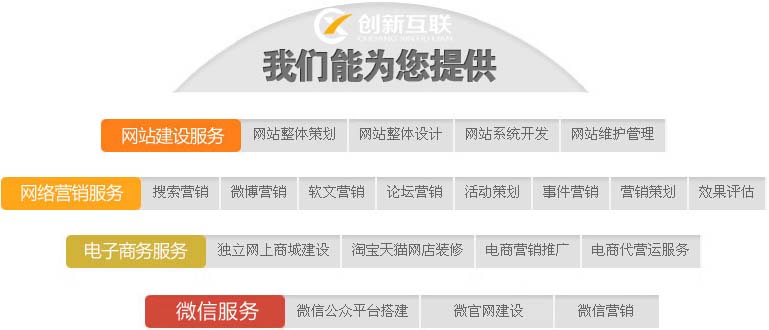如何使SCCM同时支持BIOSPXEBoot和UEFIPXEBoot
系统运维
I am a strong believer that finding a workaround to a problem isnot a fix to the problem. To that end modern devices such as thesurface are meant to be booted using the native UEFI boot. However,many organizations may also still have legacy BIOS devices that donot support UEFI boot or just work better booting from BIOS.Whatever the reasoning behind this it is actually quite easy tosetup DHCP to provide the BIOS or UEFI boot file depending on whatis used.
By using DHCP policies and custom vendor classes for the followingDHCP Options:
Option 60
Option 66
Option 67
The below assumes that you have SCCM configured with a PXE enableddistribution point and a valid and configured DHCP server. Youshould therefore be at a configured state where you are able to PXEboot BIOS based devices.
Think Custom Vendor Classes as Detection Method’s used to determinehow devices are requesting a boot image from the DHCP server.

Open the DHCP Console and expand the IPv4 Node
Right-Click on ‘IPv4 Node’ and select ‘Define VendorClasses’
Click ‘Add’
Create the UEFI 64-Bit Vendor class first by entering thefollowing information
Enter the following information for the respectivefields:
Click ‘OK’ Click ‘Add’ Click ‘OK’ Click ‘Add’ Click ‘OK’ Creating Custom DHCP Policies Right-Click ‘Policies’ and click ‘New Policy’ Give the policy a friendly name that coincides with the yourvendor class naming scheme: Click ‘Next’ On the ‘Configure Conditions for the policy’ page click‘add’ Select the ‘Value’ drop-down box and selectthe Ensure that you check the box Select ‘Add’ Select ‘Ok’ Click ‘Next’ If you want the policy to affect only a specific range withinyour scope configure it, otherwise select no and click ‘next’ On the Configure settings for the policy page ensure that ‘DHCPStandard Options’ is selected from the drop down box Configure the following scope options: Cick ‘Next’ On the BIOS 32-Bit &64-Bit DHCPPolicy Right-Click ‘Policies’ and click ‘New Policy’ Give the policy a friendly name that coincides with the yourvendor class naming scheme: Click ‘Next’ On the ‘Configure Conditions for the policy’ page click‘add’ Select the ‘Value’ drop-down box and selectthe Ensure that you check the box Select ‘Add’ Select ‘Ok’ Click ‘Next’ If you want the policy to affect only a specific range withinyour scope configure it, otherwise select no and click ‘next’ On the Configure settings for the policy page ensure that ‘DHCPStandard Options’ is selected from the drop down box Configure the following scope options: Cick ‘Next’ On the UEFI 32-Bit DHCP Policy Right-Click ‘Policies’ and click ‘New Policy’ Give the policy a friendly name that coincides with the yourvendor class naming scheme: Click ‘Next’ On the ‘Configure Conditions for the policy’ page click‘add’ Select the ‘Value’ drop-down box and selectthe Ensure that you check the box Select ‘Add’ Select ‘Ok’ Click ‘Next’ If you want the policy to affect only a specific range withinyour scope configure it, otherwise select no and click ‘next’ On the Configure settings for the policy page ensure that ‘DHCPStandard Options’ is selected from the drop down box Configure the following scope options: Cick ‘Next’ On the Remove Default PXE Options Ensure that you have removed the 067, 066, 060 options from thedefault scope options to ensure that the Policies take precedenceotherwise you will end up with conflict As long as you have configured everything correctly you should nowhave the ability to boot machines from BIOS orUEFI. Hopefully this helps alleviate some of the stress surroundingyour PXE deployments. This has worked great on all of ourdistribution points since implementation and has allowed ourdeployments to be much more flexible.
文章标题:如何使SCCM同时支持BIOSPXEBoot和UEFIPXEBoot
成都网站建设公司_创新互联,为您提供App开发、响应式网站、商城网站、网站导航、静态网站、外贸网站建设
声明:本网站发布的内容(图片、视频和文字)以用户投稿、用户转载内容为主,如果涉及侵权请尽快告知,我们将会在第一时间删除。文章观点不代表本网站立场,如需处理请联系客服。电话:028-86922220;邮箱:631063699@qq.com。内容未经允许不得转载,或转载时需注明来源:
创新互联
地址分享:https://www.cdcxhl.com/article34/cgjdse.html

- 做外贸网站建设设计前需要知道的东西 2016-11-09
- 外贸网站建设应注意的五个方面 2021-12-17
- 外贸网站建设的重要性分析 2022-05-02
- 外贸网站建设制作开发常见的问题 2021-09-09
- 成都外贸网站建设如何选择美国主机 2022-06-02
- 外贸网站建设被忽略的4点成功秘诀分析 2022-08-17
- 成都外贸网站建设如何做才能带来价值 2017-01-02
- 你对外贸网站建设了解多少? 2022-12-10
- 成都外贸网站建设哪个公司做的好 2016-04-08
- 北京网站制作--外贸网站建设 2022-07-07
- 外贸网站建设六大要点分析 2016-11-08
- 外贸网站建设需要多少钱 2022-10-28